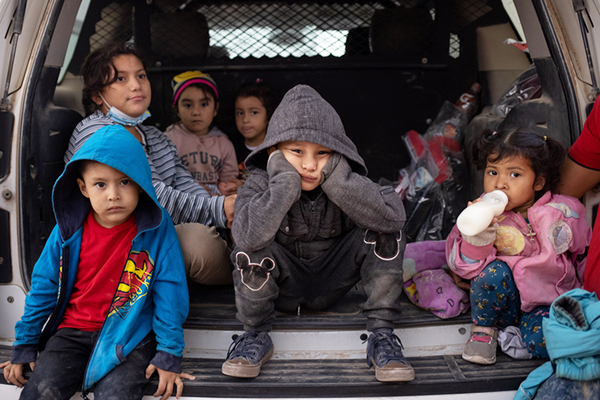~ by J.D. Long-Garcia AMERICA Magazine
Some things have changed on the southern border, but a lot of things remain the same, according to Catholic humanitarian groups on the ground.
The Biden administration last month began processing the asylum applications of migrants under the current Migrant Protection Protocols (MPP), a policy of the previous administration that empowered immigration officials to return thousands of asylum seekers to Mexico to await court decisions in the immigration court system. The highest concentration of migrants have been waiting in Ciudad Juarez, just south of El Paso. Texas
Dylan Corbett, the Executive Director of the Hope Border Institute, has noted an increase in the number of unaccompanied minors in the area. “The United States is obligated to receive, to ensure their safety and to keep them in the least restrictive setting possible – and to reunite them with their families of sponsors in other parts of the country,” h e said. But because of the overload at the border, some minors are exceeding a 72 hour court-mandated limit for detention with the Border Patrol.
Families with children are also showing up at the border in El Paso. “For the most part, nobody is being allowed [into the U.S.] through this sector, except for folks who are cleared for return under MPP or unaccompanied minors,” Mr. Corbett said.
The changes to MPP, also known as the “Remain in Mexico” policy, let to a lot of confusion among immigrants and asylum seekers south of the border, according to Rev. Pat Murphy, Director of the Casa del Migrante shelter in Tijuana.
“All they heard was [that] the border was open, that asylum was open, when in fact it was only for those who have been on ‘Remain in Mexico’ for the last two years,” the Scalabrinian priest, said. “They think that being there, the government is just going to say, ‘O.K., just come on in.” But, they’re not going to say that,” he said.
There is a lot of misinformation, and sometimes that misinformation is done purposefully by the coyotes [human traffickers] in the south, and they say, ‘Go to the border; go north. If you go to the border and wait in line, they let you in,” Fr. Murphy said. “The desperation of the people is moving them to do anything.” But, the Biden administration has yet to open the border to asylum seekers.
In the Mexican city of Nogales, Sara Ritchie of the Kino Border Initiative said they are also experience an increase in the number of migrants. Asylum seekers in border campus and vulnerable people seeking to flee Central America “have been enduring the pandemic for a year,” Ms. Ritchie said. Many of them have been out of work and cannot “sustain being unemployed” any longer, their poverty making them especially susceptible to pressure and threats from criminal gangs.
While she knows that MPP cases area being processed in California and Texas, she said few if any are being processed in Arizona.
Father Murphy expects changes to immigration and asylum policies will not come quickly.
“Biden can’t overturn everything in a month or so,” he said. It’s going to be a long haul process. Biden is going to get it from both sides. The people on the ground are going to want him to move really quickly and the people who are anti-immigrant are going to say he’s moving too quickly.”
But the immigration crisis is not going away.
“The reality is that migrants are going to continue to come to the U.S.-Mexico border fleeing a toxic cocktail of causes, whether it’s climate change, or it’s political instability or violence or unemployment and the effects of the COVID crisis, or the hurricanes that recently hit Central America,” Mr. Corbett said.
It is a time for the Catholic Church to step up its efforts, he said. “We need the moral voice of the church right now to make the case to the nation and our policy makers that this is about welcoming Christ in the stranger.”
To read the complete article click here
